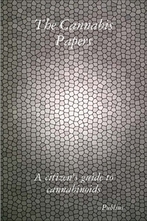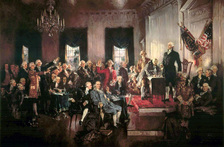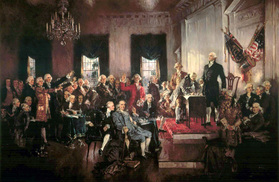by Publius
Here are a few recent 2013-14 findings on how cannabinoids modulate homeostasis and other systems in our bodies: the roundup links to seven recent PubMed articles on the central nervous, reproductive, neuromodulatory, limbic and opioid systems.
I. Nervous System (Alzheimer’s/Dementia) and CS
“The results confirm the constitutive role of the CB2 receptor system both in reducing amyloid plaque pathology in AD [Alzheimer’s disease] and also support the potential of cannabinoid therapies targeting CB2 to reduce Aβ; however, the results suggest that interventions may have a divergent effect on tau pathology.”
CB2 Receptor Deficiency Increases Amyloid Pathology and Alters Tau Processing in a Transgenic Mouse Model of Alzheimer's Disease.
Koppel J, Vingtdeux V, Marambaud P, D'abramo C, Jimenez H, Stauber M, Friedman R, Davies P.
Mol Med. 2013 Nov 8;19:357-64. doi: 10.2119/molmed.2013.00140.
PMID: 24408112 [PubMed - in process] Free PMC Article
II. Reproductive System (Male) and CS
“Together with their receptors and metabolic enzymes, they form the "endocannabinoid system" (ECS). In male reproductive tracts, they affect Sertoli cell activities, Leydig cell proliferation, germ cell differentiation, sperm motility, capacitation, and acrosome reaction.”
The Endocannabinoid System and Spermatogenesis.
Grimaldi P, Di Giacomo D, Geremia R.
Front Endocrinol (Lausanne). 2013 Dec 16;4:192. eCollection 2013. Review.
PMID: 24379805 [PubMed - as supplied by publisher] Free PMC Article
III. Neuromodulatory System and CS
“Emerging findings suggest the existence of a cross-talk between hypocretinergic and endocannabinoid systems. Although few studies have examined this relationship, the apparent overlap observed in the neuroanatomical distribution of both systems as well as their putative functions strongly point to the existence of such cross-modulation.”
Cannabinoid-hypocretin cross-talk in the central nervous system : what we know so far.
Flores A, Maldonado R, Berrendero F.
Front Neurosci. 2013 Dec 20;7:256. eCollection 2013. Review.
PMID: 24391536 [PubMed - as supplied by publisher] Free PMC Article
IV. Limbic System (Emotions) and CS
"Based on the evidence reviewed here, we propose that the endocannabinoid system is an emotional buffer that moderates the effects of environmental context and stress on cognitive processes."
The endocannabinoid system: An emotional buffer in the modulation of memory function.
Morena M, Campolongo P.
Neurobiol Learn Mem. 2013 Dec 29. pii: S1074-7427(13)00266-9. doi: 10.1016/j.nlm.2013.12.010. [Epub ahead of print]
PMID: 24382324 [PubMed - as supplied by publisher]
V. Central Nervous System (Nicotine/Acetylcholine) and CS
“Furthermore, it seems that there is a functional interaction between the BLA cannabinoid receptors and nicotine in producing the rewarding effects.”
Basolateral amygdala CB1cannabinoid receptors mediate nicotine-induced place preference.
Hashemizadeh S, Sardari M, Rezayof A.
Prog Neuropsychopharmacol Biol Psychiatry. 2014 Jan 24. pii: S0278-5846(14)00011-6. doi: 10.1016/j.pnpbp.2014.01.010. [Epub ahead of print]
PMID: 24468643 [PubMed - as supplied by publisher]
VI. Homeostasis and the CS
“The endocannabinoid system is present in stress-responsive neural circuits and it is emerging as a homeostatic system.”
Regulatory role of the Cannabinoid-2 receptor in stress-induced neuroinflammation in mice.
Zoppi S, Madrigal JL, Caso JR, García-Gutiérrez MS, Manzanares J, Leza JC, García-Bueno B.
Br J Pharmacol. 2014 Jan 28. doi: 10.1111/bph.12607. [Epub ahead of print]
PMID: 24467609 [PubMed - as supplied by publisher]
VII. Opioid System and CS
“These results enhance our understanding of the mechanisms involved in the peripheral effect of crotalphine an antinociceptive peptide, as well as the interaction between the opioid and cannabinoid systems.”
Peripheral interactions between cannabinoid and opioid systems contribute to the antinociceptive effect of crotalphine.
Machado FC, Zambelli VO, Fernandes AC, Heimann AS, Cury Y, Picolo G.
Br J Pharmacol. 2014 Feb;171(4):961-72. doi: 10.1111/bph.12488.
PMID: 24460677 [PubMed - in process]
~
Bryan w. Brickner




 RSS Feed
RSS Feed
